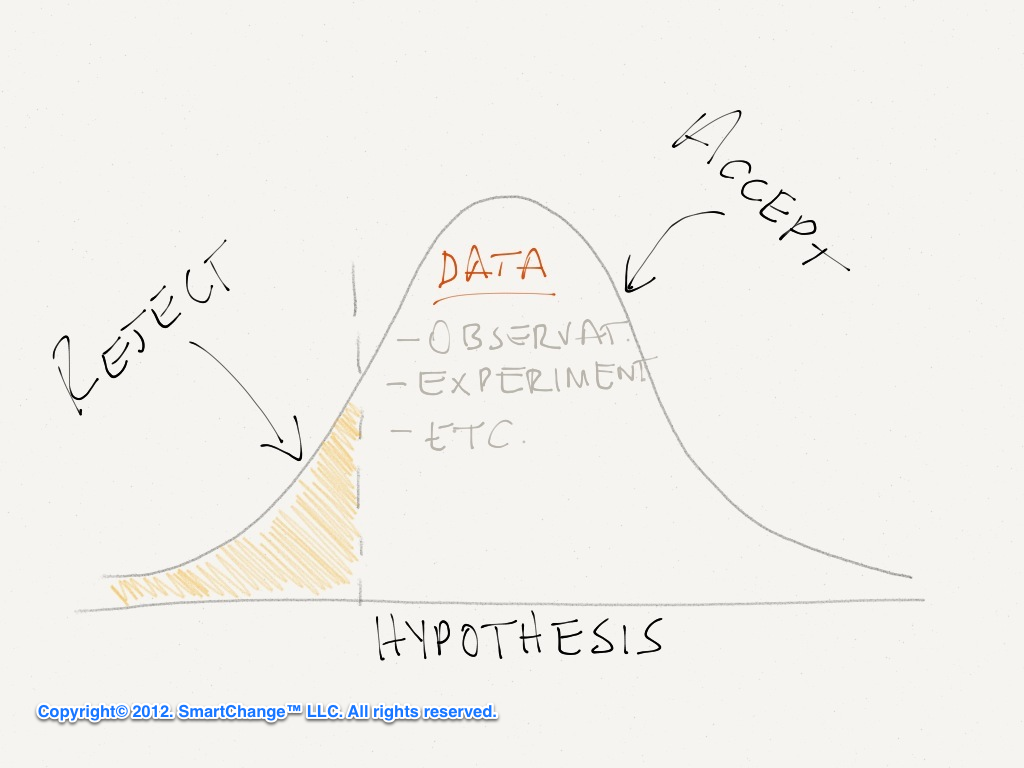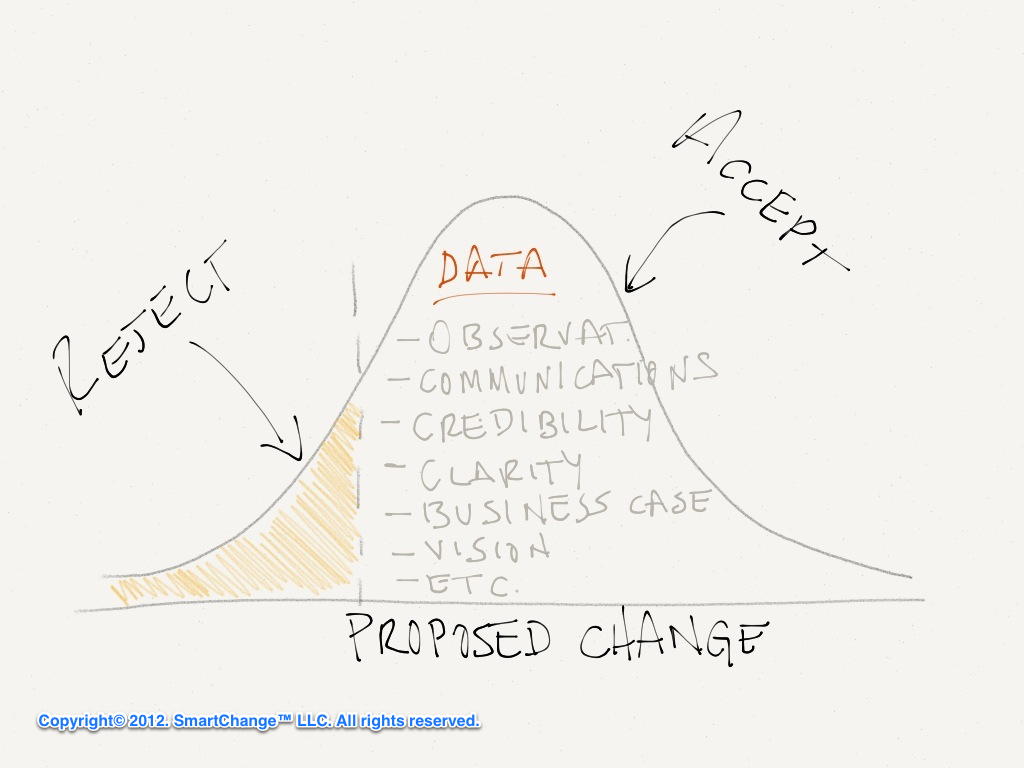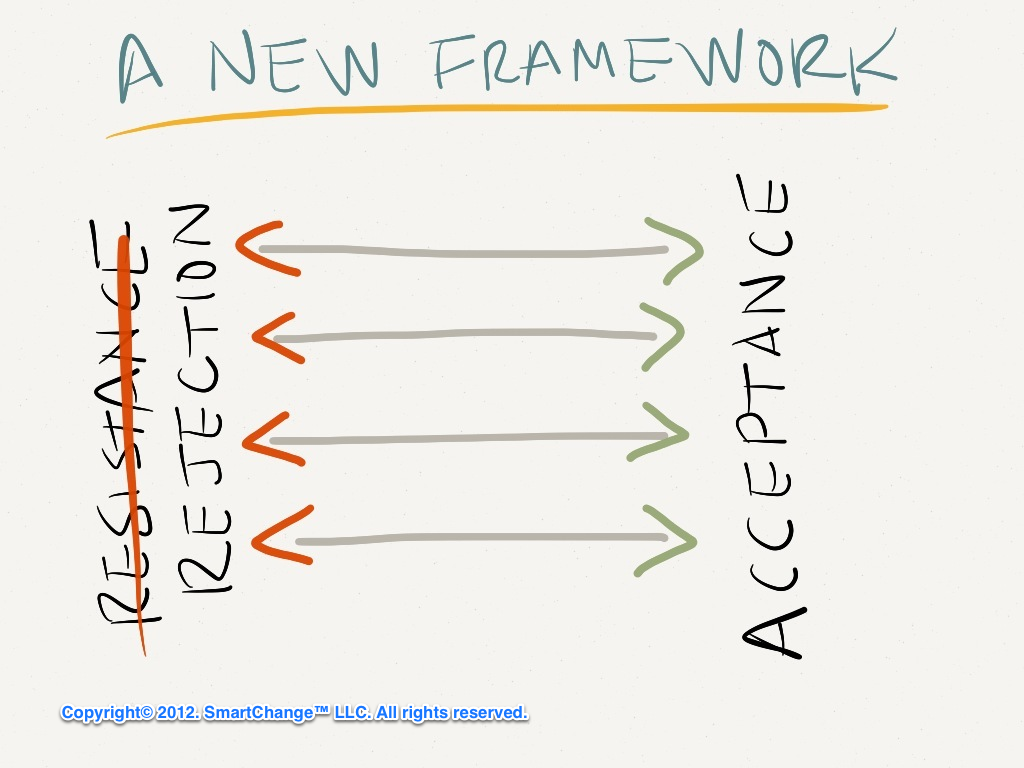Resistance or rejection? What’s the difference? And why does it matter?
As a sequel to our previous post about resistance as a counterproductive label, here we explore a new framework for ‘resistance’ to change. RESISTANCE assumes negative intent on the part of the ‘resistor’ which leads change leaders to ‘conquering‘ or ‘overcoming‘ others as the strategy for success. Alternatively, the REJECTION view assumes that people are missing evidence to accept a proposed solution. Consequently, the strategy for success is ‘influencing‘ others though evidence.
Lesson From the Field of Statistics
To illustrate, let’s use the statistical concept of hypothesis testing (see Figure 1). A scientist formulates a hypothesis (a theory) and looks for evidence to prove it (observations, experiments, etc.). If the data supports the hypothesis, the researcher accepts it, otherwise the hypothesis is rejected on the basis of ‘not enough evidence.’ This is similar to the legal concept of ‘beyond reasonable doubt’ where the evidence must overwhelmingly support the accusation (or the hypothesis) to obtain a guilty verdict.
Statistics and Organizational Change
Similarly, in organizational change, the proposed change is the hypothesis (Figure 2) or the expectation that the change is necessary and/or good for the organization. Those impacted by the change take on the role of the researcher. They look for data. The data includes, their outlook of the future, what they hear (communication messages), what they see (observations), and how they feel. If the data is credible and desirable, the change (hypothesis) is more likely to be accepted. If not, it will be rejected.
A New Framework
A more useful approach is to provide people in the organization with evidence that creates a sense of trust and confidence in the change and in those leading the change. The evidence must create clarity about where the organization is going and how to get there. The evidence must reassure people that the end goal is worth the early tradeoffs. Most importantly, the evidence must speak to the hearts the minds of those impacted. This alternative framework helps us avoid conquering or going at war with those who ‘resist’ the change and invites us to look at more useful ways to influence others to change.
So, what does it take to create and measure acceptance to change? Contact us for a no obligation discussion.



